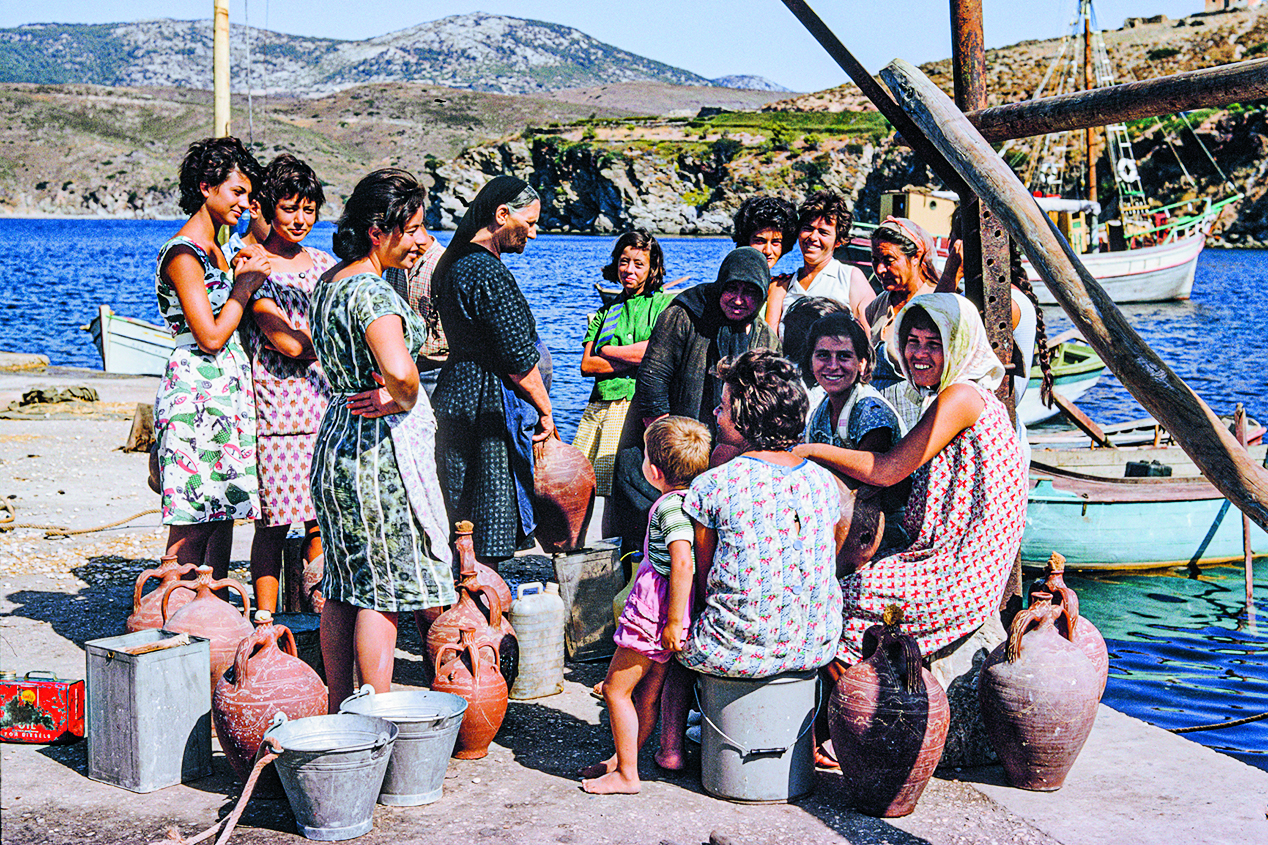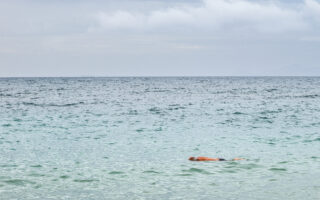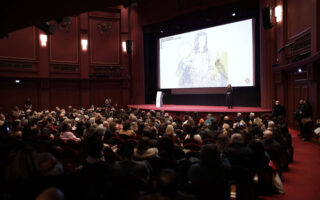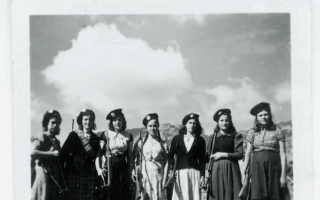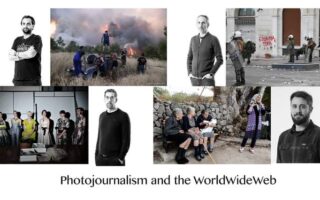Documenting the faces of hope
A double exhibition by photographer Robert A. McCabe on post-war Greece at Delphi
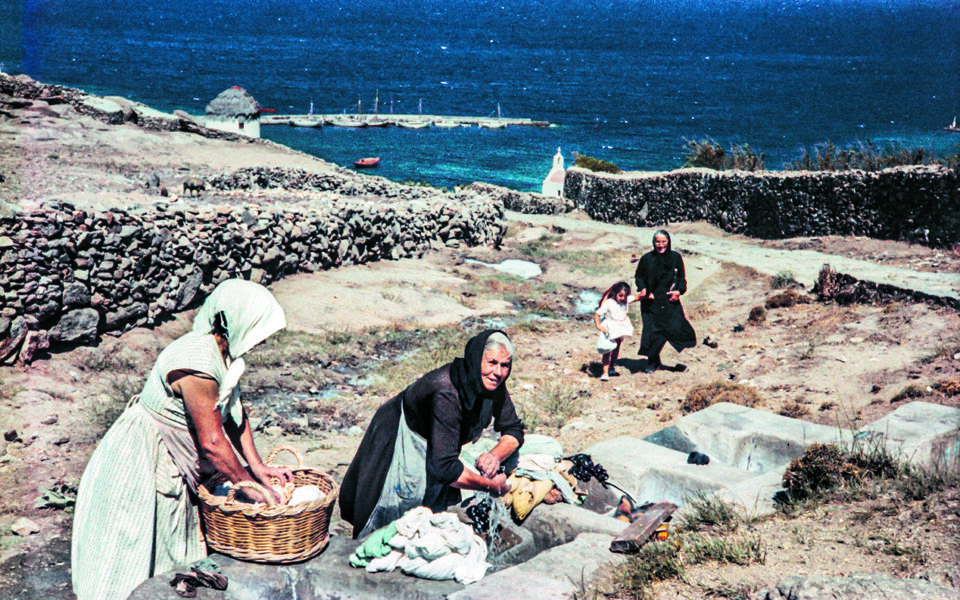
“Today is an opportune day to reflect on the past, including war and its aftermath,” remarked photographer Robert A. McCabe, an American who has made Greece his home for many years, from Delphi. On Saturday, the European Cultural Center of Delphi hosted the opening of his thematic exhibition “Greece after the War: Years of Hope,” along with a seminar that explored post-war Greece through McCabe’s lens. This date marked the 79th anniversary of the Nazi massacre of 218 Greek civilians in the village of Distomo, northwest of Athens. Despite being only 10 years old at the time, McCabe, being part of a journalistic family, instinctively understood from a young age that time has the ability to erode memories if we do not take the necessary steps to preserve and document events. This is precisely what his photographs accomplished, capturing the compassionate perspective of a foreigner toward a poverty-stricken Greece in the 1950s, devoid of any traces of colonial bias, as noted by Professor Panagiotis Roilos, president of the Delphi Center and the George Seferis Professor of Modern Greek Studies and of Comparative Literature at the Harvard University Department of the Classics, during the seminar’s opening.
The exhibition showcases 70 photographs, comprising both black-and-white and color images, which depict the post-war history of Greece as documented by McCabe during his travels in the 1950s and 1960s. From Epirus to Crete, and from Pylos to Rhodes and Mykonos, the mosaic of his wanderings is complemented by a video presentation of his photographs.
Through his photographs, McCabe conveys the joy of discovering an untouched land far removed from the post-war prosperity of America. The faces of the people in his images exude smiles, despite their lives being marked by sorrow and deprivation, as noted by Professor Kostas Kostis of the University of Athens. He emphasizes that post-war Greece was a country grappling with emigration as people sought to secure their survival. Nevertheless, amid these challenging circumstances, Greece achieved a remarkable feat, surpassing hunger and privation, and rapidly developing. It is worth mentioning that Greece became the first European state to sign an Association Agreement with the European Economic Community (EEC) in 1961.
Therefore, McCabe’s photographs do not capture an imaginary country. As part of a long lineage of Philhellenes, he turned his lens toward the reality of a difficult era, capturing the Greeks’ hope and resilience for survival. Regarding the sufferings endured by Greece during the nightmarish decade preceding his travels, McCabe familiarized himself with them through the historical album “The Sacrifices of Greece in the Second World War” (1946) by architect and planner Constantinos A. Doxiadis. During the conference, Euphrosyne Doxiadis, the daughter of Constantinos A. Doxiadis and an artist and writer herself, presented excerpts from the rare documentary book and emotionally outlined her father’s contribution as the undersecretary and director-general of the Hellenic Ministry of Housing and Reconstruction in the post-war era.
During the same panel, archaeologist Athanasia Psalti, head of the Ephorate of Fokida Antiquities, discussed what she referred to as the “thousands of lives of Delphi.” McCabe’s photographs also portray the archaeological site as it appeared in the 1950s and are currently on display at the city’s archaeological museum. In collaboration with the photographer and under the supervision of Sophia Hiniadou Cambanis, the Ephorate of Antiquities presents 26 selected black-and-white photographs that engage in a dialogue with the exhibits, approaching the space and its history with utmost respect.
The captions accompanying the photographs feature brief excerpts from Homeric hymns, Delphic oracles, and poems by renowned Greek and international poets and writers, all inspired by the brilliance of Delphi.
This exhibition is intricately designed to complement and run in parallel with the exhibition at the European Cultural Center of Delphi. Additionally, the accompanying book, titled “Greece after the War: Years of Hope” (published by Patakis / Abbeville Press), enhances the visitor’s experience.
The exhibition “Greece after the War: Years of Hope” will be on display until September 30, while the exhibition at the Archaeological Museum will continue until December 31.
